#singing in films from 1934-78
Photo
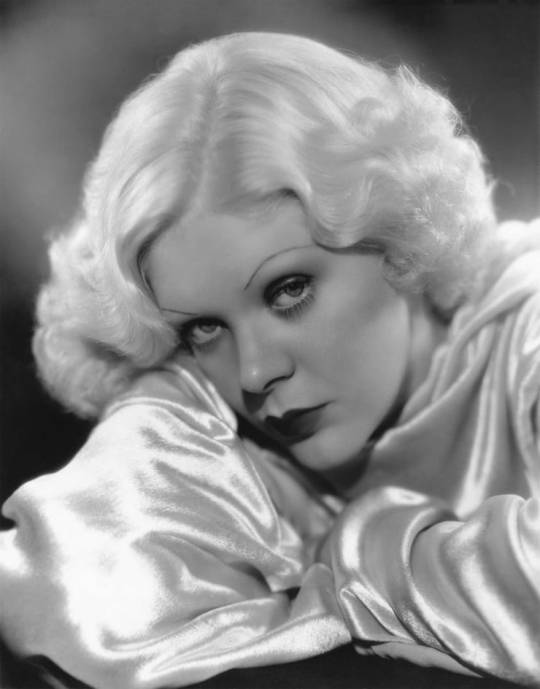

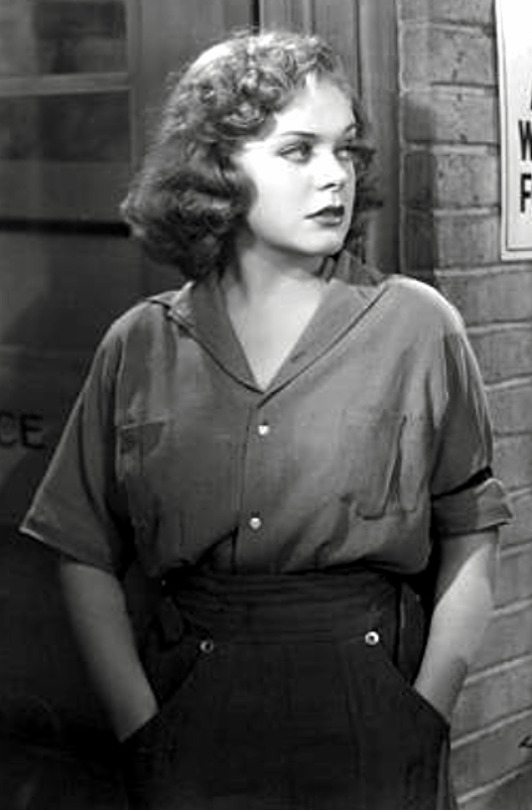
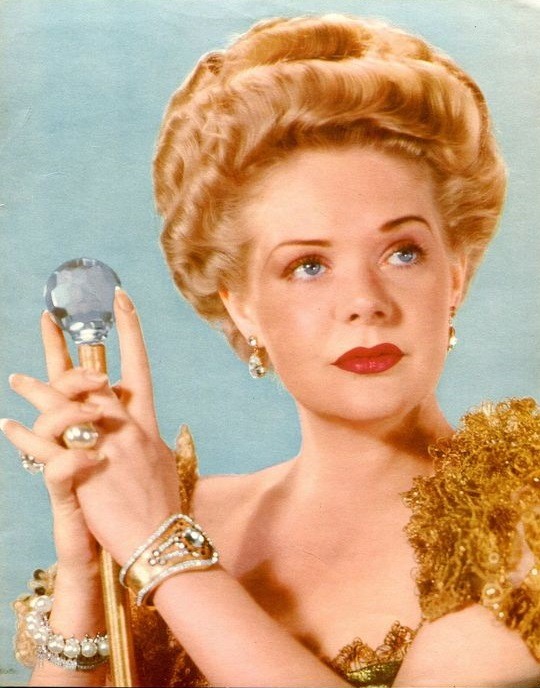

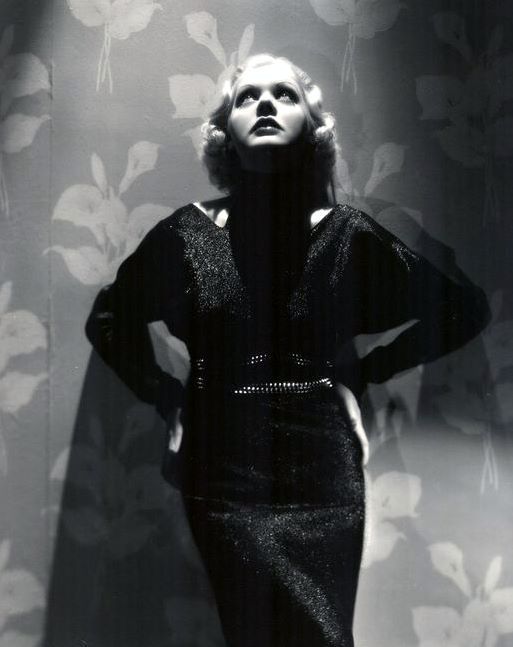

Happy Birthday To Gorgeous Forgotten American Singer/Actress Alice Faye
(Born 5th May 1915)
Pics Sources: Listal.com - Bing Images - Famousfix.com
#alice faye#birthday girl#born 5th may 1915#gorgeous forgotten american singer/actress#alice rose from the mean streets of new york's hell kitchen to become the most famous singing actress in the world#trade marks: blue-eyed blonde - sexy contralto voice - often played gritty no-nonsense ladies#appeared in 6 films with carmen miranda#appeared in 2 george white scandals (1934 & 35)#best remembered for her roles in sing baby sing - king of burlesque (both 1936) - tail spin (1939) - lillian russell (1940)#also remembered for sally irene and mary (1938) - tin pan alley (1940) - weekend in havana (1941) - state fair (19620#only 37 ating credits#years active 1934-45 & 1962 & 1976-1980#singing in films from 1934-78#old hollywood musicals#old hollywood#pics sources: listal.com - bing images - famousfix.com
29 notes
·
View notes
Text
LUCY ON THE DAIS - Part Two
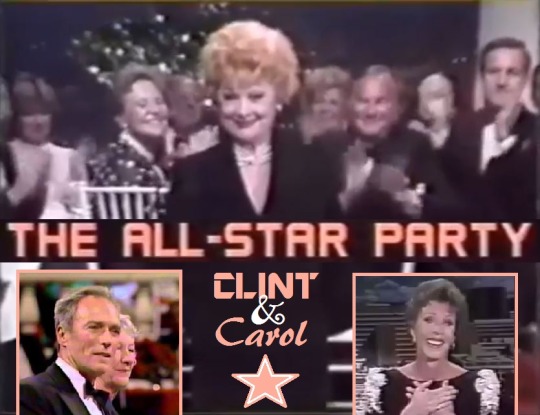
“All-Star Party for Carol Burnett”
December 12, 1982 on CBS
Directed by Dick McDonogh
Produced and Written by Paul Keyes
Music by Nelson Riddle
THE PARTY-GOERS

Carol Burnett (Honoree) got her first big break on “The Paul Winchell Show” in 1955. A years later she was a regular on “The Garry Moore Show.” In 1959 she made her Broadway debut in Once Upon a Mattress, which she also appeared in on television three times. From 1960 to 1965 she did a number of TV specials, and often appeared with Julie Andrews. Her second Broadway musical was Fade Out – Fade In which ran for more than 270 performances. From 1967 to 1978 she hosted her own highly successful variety show, “The Carol Burnett Show.” Lucille Ball made several appearances on “The Carol Burnett Show.” Burnett guest starred in four episodes of “The Lucy Show” and three episodes of “Here’s Lucy,” subsequently playing a character named Carol Krausmeyer. After Lucille Ball’s passing, Burnett was hailed as the natural heir to Lucy’s title of ‘The Queen of TV Comedy.’

Lucille Ball was born on August 6, 1911 in Jamestown, New York. She began her screen career in 1933 and was known in Hollywood as ‘Queen of the B’s’ due to her many appearances in ‘B’ movies. With Richard Denning, she starred in a radio program titled “My Favorite Husband” which eventually led to the creation of “I Love Lucy,” a television situation comedy in which she co-starred with her real-life husband, Latin bandleader Desi Arnaz. The program was phenomenally successful, allowing the couple to purchase what was once RKO Studios, re-naming it Desilu. When the show ended in 1960 (in an hour-long format known as “The Lucy-Desi Comedy Hour”) so did Lucy and Desi’s marriage. In 1962, hoping to keep Desilu financially solvent, Lucy returned to the sitcom format with “The Lucy Show,” which lasted six seasons. She followed that with a similar sitcom “Here’s Lucy” co-starring with her real-life children, Lucie and Desi Jr., as well as Gale Gordon, who had joined the cast of “The Lucy Show” during season two. Before her death in 1989, Lucy made one more attempt at a sitcom with “Life With Lucy,” also with Gordon, which was not a success and was canceled after just 13 episodes.
Monty Hall – Chairman of Variety Clubs International
Carol Burnett's Family (center table)
Joe Hamilton – Carol's Husband
Erin Hamilton – Carol and Joe's daughter (age 14)
Jody Hamilton – Carol and Joe's daughter (age 15)
Carrie Hamilton – Carol and Joe's daughter (age 19)
Credited Entertainers & Speakers (with credits shared with Carol Burnett)
Tim Conway - “The Carol Burnett Show” (1967-78)
*Sammy Davis Jr. - “The Carol Burnett Show” (1975 & 1976), “Sammy & Co.” (1976)
Bette Davis
Glenda Jackson – HealtH (1980)
*Steve Lawrence - “The Garry Moore Show” (1959-63), “The Carol Burnett Show” (1967-78)
Vicki Lawrence - “The Carol Burnett Show” (1967-78)
*Jim Nabors - “The Carol Burnett Show” (1967-76), “Gomer Pyle: USMC” (1967 & 1969), “The Jim Nabors Hour” (1969 & 1970), “The Jim Nabors Show” (1978)
Jack Paar - “The Jack Paar Tonight Show” (1957-58)
Burt Reynolds - “The Carol Burnett Show” (1972), “Evening Shade” (1993)
Nelson Riddle and his orchestra
Tom Selleck - “Magnum P.I.” (1984 & 1988)
Beverly Sills - “Sills & Burnett at the Met” (1976)
James Stewart - “The Joey Bishop Show” (1969), “A Special Evening with Carol Burnett” (1978)
Uncredited Attendees (with credits shared with Carol Burnett)
Steve Allen
Loni Anderson
Fred Astaire
Ned Beatty
Sammy Cahn
*Ellen Corby
Altovise Davis – Wife of Sammy Davis Jr.
Dom DeLuis
Angie Dickinson
Mike Douglas
Morgan Fairchild
Zsa Zsa Gabor
Harold Gould
Florence Henderson
Ted Lange
Michele Lee
*Dick Martin
*Jayne Meadows
Rita Moreno
Lynn Redgrave
Jean Stapleton
Loretta Switt
*Danny Thomas
Daniel J. Travanti
Abe Vigoda
Betty White
* Appeared with Lucille Ball on one of her television series'

Two years later, “All-Star Party for Lucille Ball” also featured Monty Hall, Sammy Davis Jr., Burt Reynolds, James Stewart, and Vicki Lawrence.

Variety, the Children’s Charity is an organization founded in Pittsburgh, Pennsylvania in 1927, when a group of eleven men involved in show business set up a social club which they named the Variety Club. On Christmas Eve 1928, a baby was left on the steps of the Sheridan Square Film Theatre. When efforts to trace the mother failed, the Variety Club named the child Catherine Variety Sheridan, after the club and the theatre on whose steps she was found, and undertook to fund the child’s living expenses and education. Later the club decided to raise funds for other disadvantaged children. The discovery of the baby inspired the film Variety Girl (1947).

In 1986, Ball served as Hostess for the “All-Star Party for Clint Eastwood.”
THE ALL-STAR PARTY
Previous “All-Star Party” honoree 1981 Burt Reynolds introduces the show.
After the first commercial break, Lucille Ball is introduced. She kisses Carol and walks to the stairs to speak. While she does, Carol bows to her as 'the Queen of Comedy.'
Lucy says they are there to honor three women:
Carol Burnett, the singer
Carol Burnett, the legitimate actress, and
Carol Burnett, the comedienne
Lucy: “Good for you, kid. You've done it all, and you've done it well.”
Carol Burnett would often remark how Lucy affectionately called her 'kid'. Lucy reads a letter from the White House signed by Ronald Reagan. Reagan would be the guest of honor in 1983. He would also send notes of congratulations and regrets in 1984 (for Lucille Ball) and 1986 (for Clint Eastwood). The latter two notes were read by Cary Grant.
Lucy introduces Sammy Davis Jr. Sammy wanted to sing, but defers to Steve Lawrence, who sings Cole Porter's “You're The Top” with special lyrics for the occasion by Sammy Cahn.
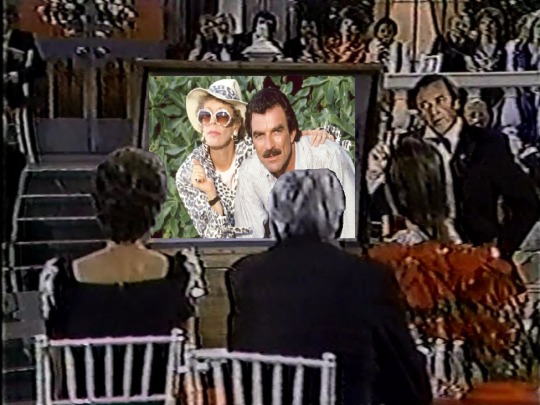
Jim Nabors wheels on a large projection TV and Tom Selleck (in a Hawaiian shirt, naturally) appears on it to pay tribute to Burnett. His seductive tone causes Carol to cuddle up to the TV set.
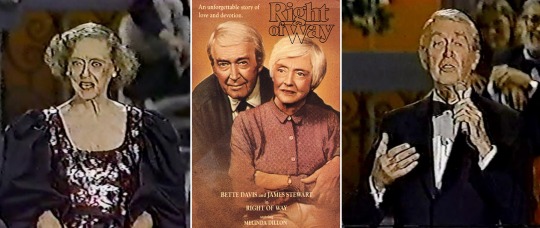
Nabors brings on Bette Davis if, for no other reason, to introduce Jimmy Stewart. Davis and Stewart had just done a picture together, the TV film Right of Way, released in 1983. It was Stewart's penultimate screen acting role. Surprisingly, Davis says that Stewart will sing!
Jimmy Stewart, not known as a singer, croons Cole Porter's “Easy to Love,” the evening's second song from the 1934 stage musical Anything Goes. The song was also included in the 1936 film Born To Dance starring Stewart and Eleanor Powell (whose voice was dubbed). Stewart manages to get through the first chorus (although sadly out of key). For the second chorus he asks that the lights be dimmed so it is just him singing to Burnett. It is a truly intimate and lovely moment considering that the only time the two ever saw each other was on award, talk, or tribute shows. Burnett and Stewart never appeared together in a dramatic context.

After a break, Tim Conway does an elaborate comedy bit with a bank of telephones designed for viewers to call in to pay tribute to Carol. Despite the large number of phones (and corresponding lights) – no one calls. Conway reads Carol a telegram from Garry Moore.
Jack Paar talks about their early days on “The Tonight Show” and recalls Burnett singing “I Was A Fool For John Foster Dulles” by Kenny Welsh in August 1958. Paar introduces Vicki Lawrence to re-create the song.
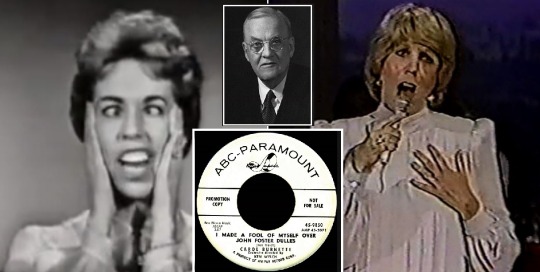
John Foster Dulles served as United States Secretary of State under President Dwight D. Eisenhower from 1953 to 1959. He was a significant figure in the early Cold War era, advocating an aggressive stance against communism throughout the world.
Glenda Jackson steps out to unveil a photograph of the UCLA Medical Center where a wing will be renamed the Carol Burnett Wing for Handicapped Children.
Carol expresses her thanks to everyone. She tells how she and her grandmother used to go to the movies to see many of the folks in the room: Jimmy Stewart, Lucille Ball, Fred Astaire, and Bette Davis.
Carol is coaxed into singing her theme song “I'm So Glad We Had This Time Together.” Another voice joins in from behind her – it is her old friend opera singer Beverly Sills. The song continues, with special lyrics for the occasion (likely written by Sammy Cahn).
This Date in Lucy History – December 12
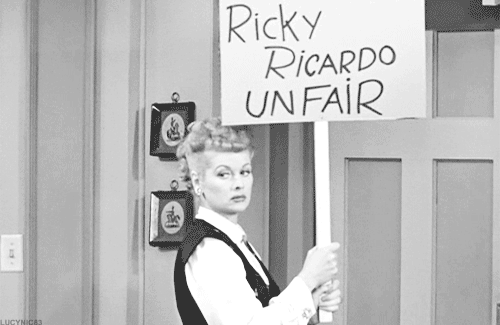
“Ricky's European Booking” (ILL S5;E10) – December 12, 1955
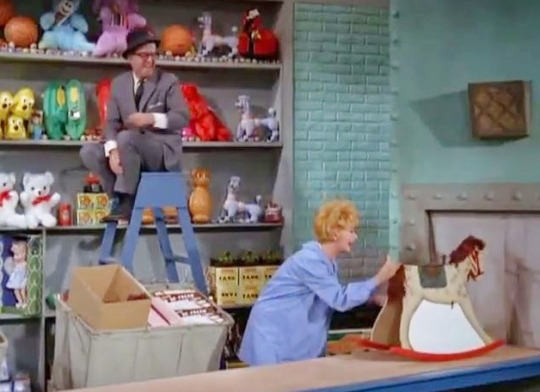
"Lucy and the Efficiency Expert" (TLS S5;E13) – December 12, 1966
#All-Star Party for Carol Burnett#Carol Burnett#Lucille Ball#Monty Hall#Variety Clubs#Joe Hamilton#Nelson Riddle#Sammy Cahn#Tim Conway#Carrie Hamilton#Bette Davis#Jimmy Stewart#Glenda Jackson#Steve Lawrence#Vicki Lawrence#Sammy Davis Jr.#Burt Reynolds#Jack Paar#Jim Nabors#Tom Selleck#Beverly Sills#fred astaire#Steve Allen#Jayne Meadows#ronald reagan#1982#CBS#TV
3 notes
·
View notes
Text
2017 Movie Odyssey
So ends the 2017 Movie Odyssey. Last year, I wrote that I did not foresee ever surpassing the 200+ movie mark for a long, long time. But look what happened here (outside of May because that was a hectic time in the Master’s program for sure). The 2017 Movie Odyssey consisted of 232 films - 180 feature-length films and fifty-two shorts. A century of filmmaking was covered this year, from 1917 to 2017. If I do have one regret this year... it’s that African films were not featured this year (due to availability issues and me not having enough money; I tend to watch things legally if possible). I hope to assuage that next year for a more representative Movie Odyssey.
For all of you out there who supported the Movie Odyssey in your own ways – whether reading, liking, commenting, or reblogging a write-up or sitting down with me to a new movie or talking to me about any movie... my thanks to all of you. None of this possible without you, and I hope you find that, through this blog, classic movies seem more approachable and welcoming and you are inspired to see some and learn about them yourself. A Happy New Year to all, and I’ll see you for the 2018 leg of the Movie Odyssey very soon (oh boy the Winter Olympics and World Cup are gonna chip away at the final count next year)!
As many know, all ratings are based on my imdb rating and half-points are always rounded down. My interpretation of that ratings system can be found here. A 6/10 is considered the borderline between “passing” and “failing”. Feature-length narrative films, short films, and documentaries are rated within their respective spectrums.
JANUARY
1. Marnie (1964) – 6/10
2. The Moon Is Down (1943) – 7/10
3. Sense and Sensibility (1995) – 8.5/10
4. The Big House (1930) – 7.5/10
5. Manchester by the Sea (2016) – 7/10
6. The Far Country (1954) – 7/10
7. Kung Fu Hustle (2004, Hong Kong/China) – 7/10
8. Road to Singapore (1940) – 6/10
9. A Clever Dummy (1917 short) – 5/10
10. Hidden Figures (2016) – 7.5/10
11. Teddy at the Throttle (1917 short) – 7.5/10
12. The Last of the Mohicans (1920) – 7/10
13. Sweet Smell of Success (1957) – 10/10
14. The Red Turtle (2016, France/Belgium/Japan) – 9/10
15. Life, Animated (2016) – 7.5/10
16. In the Mood for Love (2000, Hong Kong) – 10/10
FEBRUARY
17. Lion (2016) – 7/10
18. It’s Always Fair Weather (1955) – 7.5/10
19. Fences (2016) – 8.5/10
20. Shenandoah (1965) – 7/10
21. Caged (1950) – 8/10
22. Pearl (2016 short) – 7.5/10
23.��Blind Vaysha (2016 short) – 8/10
24. Asteria (2016 short) – 6/10
25. The Head Vanishes (2016 short) – 6/10
26. Once Upon a Line (2016 short) – 7/10
27. Pear Cider and Cigarettes (2016 short) – 8/10
28. Sing (2016 short, Hungary) – 7.5/10
29. Silent Nights (2016 short, Denmark) – 6/10
30. Timecode (2016 short, Spain) – 7/10
31. Ennemis intérieurs (2016 short, France) – 8.5/10
32. La femme et le TGV (2016 short, Switzerland) – 8/10
33. Joe’s Violin (2016 short) – 7/10
34. Extremis (2016 short) – 8/10
35. 4.1 Miles (2016 short, Greece) – 9/10
36. Nashville (1975) – 7.5/10
37. The Romance of Transportation in Canada (1952 short) – 7/10
MARCH
38. My Life as a Zucchini (2016, Switzerland) – 8/10
39. Lili (1953) – 7/10
40. The Man from U.N.C.L.E. (2015) – 6/10
41. Captain Blood (1935) – 9.5/10
42. Logan (2017) – 7/10
43. Friendly Persuasion (1956) – 9/10
44. Ducks and Drakes (1921) – 7/10
45. What Dreams May Come (1998) – 6/10
46. Bright Road (1953) – 6/10
47. Snow Gets in Your Eyes (1938 short) – 5/10
48. Jungle Cat (1959) – 6.5/10
49. The Salesman (2016, Iran) – 8.5/10
50. Good Scouts (1938 short) – 7.5/10
51. All in a Nutshell (1949 short) – 8/10
52. The Hound That Thought He Was a Raccoon (1960) – 7/10
53. Winter Storage (1949 short) – 7/10
54. Out of Scale (1951 short) – 8/10
55. The Incredible Journey (1963) – 7/10
56. Follow Me, Boys! (1966) – 7/10
57. Charlie, the Lonesome Cougar (1967) – 5.5/10
58. Belladonna of Sadness (1973, Japan) – 6/10
59. Ponyo (2008, Japan) – 7/10
60. My Cousin Rachel (1952) – 7.5/10
61. Road to Perdition (2002) – 9/10
APRIL
62. The X from Outer Space (1967, Japan) – 3/10
63. The Blue Gardenia (1953) – 6.5/10
64. Get Out (2017) – 7.5/10
65. Fantastic Planet (1973, France/Czechoslovakia) – 8/10
66. 5 Centimeters Per Second (2007, Japan) – 6/10
67. Your Name (2016, Japan) – 7.5/10
68. The Outlaw and His Wife (1918, Sweden) – 7/10
69. Mail Early (1941 short) – experimental film, score withheld
70. Boogie-Doodle (1948 short) – experimental film, score withheld
71. A Chairy Tale (1957 short) – 9/10
72. Very Nice, Very Nice (1961 short) – experimental film, score withheld
73. Fine Feathers (1968) – 7/10
74. What on Earth! (1967 short) – 8/10
75. Walking (1968 short) – 7/10
76. Notes on a Triangle (1966 short) – experimental film, score withheld
77. The Three Faces of Eve (1957) – 7.5/10
78. Peeping Tom (1960) – 7.5/10
79. Porco Rosso (1992, Japan) – 8/10
80. MacArthur (1977) – 6/10
MAY
81. Dr. Goldfoot and the Bikini Machine (1965) – 4/10
82. Scarlet Street (1945) – 8.5/10
83. Tremors (1990) – 7/10
84. The Crucified Lovers (1954, Japan) – 7.5/10
85. Akeelah and the Bee (2006) – 8/10
JUNE
86. Wonder Woman (2017) – 7/10
87. Pollyanna (1960) – 7.5/10
88. Mickey’s Polo Team (1936 short) – 8/10
89. Tales of Manhattan (1942) – 7/10
90. The Horse with the Flying Tale (1960) – 7/10
91. Sound of the Mountain (1954, Japan) – 9/10
92. Return of the Fly (1959) – 4/10
93. Friday the 13th (1980) – 4/10
94. The Tattooed Police Horse (1964) – 6/10
95. Dr. Jack (1922) – 7/10
96. Pat Garrett and Billy the Kid (1973) – 7/10
97. Friday the 13th Part 2 (1981) – 5/10
98. The Great Man (1956) – 8/10
99. Sparrows (1926) – 7.5/10
100. Seven Days to Noon (1950) – 9/10
101. My Neighbor Totoro (1988, Japan) – 8.5/10
102. The Pocket Man (2016 short, France) – 7/10
103. Snack Attack (2012 short) – 7/10
104. You Were Never Lovelier (1942) – 7/10
105. San Francisco (1936) – 7.5/10
106. Eraserhead (1977) – 6.5/10
JULY
107. The Beguiled (2017) – 7/10
108. Summer Magic (1963) – 6/10
109. The Southerner (1945) – 9/10
110. The Statue of Liberty (1985) – 6/10
111. They Live by Night (1948) – 8/10
112. A Little Romance (1979) – 6/10
113. Conflagration (1958, Japan) – 6.5/10
114. The Naughty Twenties (1951 short) – 5/10
115. The Fastest Gun Alive (1956) – 7/10
116. For Your Eyes Only (1981) – 6/10
117. A Man There Was (1917, Sweden) – 9.5/10
118. His Royal Slyness (1920 short) – 6/10
119. Now or Never (1921 short) – 6.5/10
120. Among Those Present (1921 short) – 6/10
121. Dawn of the Planet of the Apes (2014) – 7.5/10
122. Independence Day (1996) – 5/10
123. Yoyo (1965, France) – 8/10
124. The Man Who Knew Too Much (1934) - 6.5/10
125. War for the Planet of the Apes (2017) – 7.5/10
126. The Lady Vanishes (1938) – 10/10
127. Funny Face (1957) – 9/10
128. A Brighter Summer Day (1991, Taiwan) – 9.5/10
129. A Sailor-Made Man (1921) – 6/10
130. Much Ado About Nothing (1993) – 8/10
131. Dunkirk (2017) – 8.5/10
132. Lost Horizon (1937) – 8/10
133. The Man from Snowy River (1982) – 7.5/10
134. A Touch of Zen (1971, Taiwan) – 10/10
AUGUST
135. A Double Life (1947) – 6/10
136. Tokyo Chorus (1931, Japan) – 7/10
137. In a Heartbeat (2017 short) – 7.5/10
138. Valerian and the City of a Thousand Planets (2017) – 4.5/10
139. Twelve O’Clock High (1949) – 9/10
140. The Big Clock (1948) – 7/10
141. Pink Floyd – The Wall (1982) – 8/10
142. Record of a Tenement Gentleman (1947, Japan) – 9/10
143. Octopussy (1983) – 6/10
144. West of Zanzibar (1928) – 6/10
145. Take Me Out to the Ball Game (1949) – 7/10
146. Detroit (2017) – 5.5/10
147. That Funny Feeling (1965) – 6/10
148. Kid Galahad (1962) – 6/10
149. Tokyo Twilight (1957, Japan) – 10/10
150. In This Corner of the World (2016, Japan) – 7/10
151. The Bedford Incident (1965) – 7.5/10
152. Johnny Express (2014 short) – 6/10
153. Carpark (2013 short) – 6/10
154. Castle in the Sky (1986, Japan) – 8/10
155. The Goonies (1985) – 7.5/10
156. State of the Union (1948) – 6/10
SEPTEMBER
157. Beyond the Poseidon Adventure (1979) – 3/10
158. Muscle Beach Party (1964) – 4/10
159. The Nutty Professor (1963) – 7/10
160. Camille (1921) – 6.5/10
161. Aguirre, the Wrath of God (1972, West Germany) – 8/10
162. Independence Day: Resurgence (2016) – 2/10
163. It (2017) – 7/10
164. Ocean Waves (1993, Japan) – 6/10
165. Monterey Pop (1968) – 8/10
166. Don’t Look Back (1967) – 9/10
167. Tyrus (2015) – 8.5/10
OCTOBER
168. A Star Is Born (1937) – 8/10
169. Swiss Family Robinson (1960) – 6/10
170. Revenge of the Nerds (1984) – 5/10
171. Horton Hears a Who! (2008) – 6/10
172. Freaky Friday (1976) – 6/10
173. The Great Muppet Caper (1981) – 7.5/10
174. Mr. & Mrs. ’55 (1955, India) – 8/10
175. Island of Lost Souls (1932) – 9.5/10
176. The Little Broadcast (1943 short) – 6.5/10
177. Hoola Boola (1941 short) – 6/10
178. The Sleeping Beauty (1935 short) – 7/10
179. Tulips Shall Grow (1942 short) – 8.5/10
180. Charulata (1964, India) – 8/10
181. Together in the Weather (1946 short) – 6/10
182. John Henry and the Inky-Poo (1946 short) – 7.5/10
183. Philips Cavalcade (1934 short) – 7/10
184. Jasper in a Jam (1946 short) – 8/10
185. Tubby the Tuba (1947 short) – 9/10
186. The Puppetoon Movie (1987) – 7/10
187. Brides of Dracula (1960) – 7/10
188. Blackbeard’s Ghost (1968) – 7/10
189. Candleshoe (1977) – 6/10
190. Jigoku (1960, Japan) – 5.5/10
191. Blacula (1972) – 6/10
192. Willard (1971) – 4/10
193. Ben (1972) – 4.5/10
NOVEMBER
194. The Coward (1965, India) – 7/10
195. The Happening (2008) – 2/10
196. Tom Thumb (1958) – 6.5/10
197. Strike (1925, Soviet Union) – 7.5/10
198. Loving Vincent (2017) – 7/10
199. Destry Rides Again (1939) – 7.5/10
200. The Master Race (1944) – 6/10
201. Justice League (2017) – 6/10
202. Sissi (1955, Austria) – 7.5/10
203. Sissi: The Young Empress (1956, Austria) – 7/10
204. The Sandlot (1993) – 7/10
205. Olaf’s Frozen Adventure (2017 short) – 4/10
206. Coco (2017) – 8/10
207. Sissi – Fateful Years of an Empress (1957, Austria) – 7/10
208. The Florida Project (2017) – 8.5/10
209. The Mortal Storm (1940) – 7/10
210. The Breadwinner (2017) – 8/10
211. Spencer’s Mountain (1963) – 6/10
212. Lady Bird (2017) – 9/10
DECEMBER
213. The Four Horsemen of the Apocalypse (1921) – 8.5/10
214. The Secret Life of Bees (2008) – 7/10
215. Murder on the Orient Express (2017) – 5.5/10
216. So You Think You’re Allergic (1945 short) – 5/10
217. Three Billboards Outside Ebbing, Missouri (2017) – 7.5/10
218. The Shape of Water (2017) – 8.5/10
219. Lonely Are the Brave (1962) – 9.5/10
220. Star Wars: The Last Jedi (2017) – 7/10
221. They Won’t Forget (1937) – 8/10
222. It Came from Outer Space (1953) – 6.5/10
223. Brave Little Tailor (1938 short) – 8/10
224. The Story of Robin Hood and His Merrie Men (1952) – 6/10
225. The Sign of Zorro (1958) – 5/10
226. Kong: Skull Island (2017) – 6.5/10
227. Flipped (2010) – 6/10
228. Bardelys the Magnificent (1926) – 7.5/10
229. There’s No Business Like Show Business (1954) – 7/10
230. Swim Team (2016) – 7/10
231. Toby Tyler (1960) – 5/10
232. The Liberator (2013, Venezuela) – 6/10
All scores are subject to change (upgrades and downgrades) upon a rewatch.
3 notes
·
View notes
Text
Frank Sinatra – Fly Me to the Moon
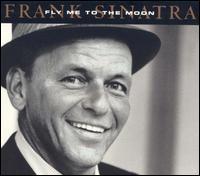
Frank Sinatra – Fly Me to the Moon
Call 1-855-637-4055 for our Psychic line as low as 66¢/min
About Fly Me To The Moon:
“Fly Me to the Moon” is a popular standard song written by Bart Howard in 1954. Originally titled “In Other Words” the song was introduced by Felicia Sanders in cabarets before being recorded for the first time by Kaye Ballard. The song soon became known popularly as “Fly Me to the Moon” from the first line of the B verse. Peggy Lee is said to have convinced Bart Howard in 1963 to change the song’s title officially to Fly Me to the Moon.
Frank Sinatra recorded a version on the album It Might as Well Be Swing (1964), accompanied by Count Basie. This version was arranged by Quincy Jones who changed the time signature from 3/4 waltz-time to 4/4 and gave it a looser, swing feel. Sinatra also performed the song with Basie on Sinatra at the Sands (1966), and with bossa nova great Antonio Carlos Jobim on Duets II (1994).
lyrics:
Fly me to the moon
Let me play among the stars
Let me see what spring is like
On a-Jupiter and Mars
In other words, hold my hand
In other words, baby, kiss me
Fill my heart with song
And let me sing for ever more
You are all I long for
All I worship and adore
In other words, please be true
In other words, I love you
Fill my heart with song
Let me sing for ever more
You are all I long for
All I worship and adore
In other words, please be true
In other words, in other words
I love you
About Frank Sinatra:
Francis Albert “Frank” Sinatra (December 12, 1915 – May 14, 1998) was an American singer and film actor. Beginning his musical career in the swing era as a boy singer with Harry James and Tommy Dorsey, Sinatra found unprecedented success as a solo artist from the early to mid-1940s after being signed by Columbia Records in 1943.
Back on the small-screen, Sinatra once again worked with Jobim and Ella Fitzgerald on the TV special, A Man and His Music + Ella + Jobim. The chorus of Bon Jovi‘s “It’s My Life” (subsequently covered by Paul Anka on Rock Swings) references the song in the line “My heart is like an open highway/Like Frankie said, I did it my way.”
Other Songs By Frank Sinatra:
“I Won’t Dance” is a song composed by Jerome Kern, with lyrics written by Oscar Hammerstein II and Otto Harbach, for the 1934 London musical Three Sisters. However, Three Sisters flopped and was quickly forgotten, so when the time came to film the Kern-Harbach musical Roberta, the song was interpolated into the film. It became such a hit that it is now included in all stage revivals and recordings of Roberta. In 1957, Frank Sinatra sung “I Won’t Dance” in his album: A Swingin’ Affair! (and Sinatra-Basie, 1962).
“I’ve Got The World on a String” is a 1932 popular song composed by Harold Arlen, with lyrics written by Ted Koehler. It was written for the 1932 Cotton Club Parade. It was introduced by Cab Calloway and Bing Crosby. It was also recorded by Frank Sinatra in 1953. It reached #14 on Billboard’s most played list. Anthony Perkins sang it in the drama Winter Dream, a production of the live anthology TV series, Front Row Center. Céline Dion also performed this song in her Las Vegas show A New Day…, which ran from 2003 until 2007.
“Summer Wind” is a 1965 song, with music by Heinz Meier and lyrics by Johnny Mercer. The song is a nostalgic tale of a fleeting romance, first recorded by Wayne Newton who had the first national chart hit with the song in 1965, peaking at number 78.b “Summer Wind” is best known for a 1966 recording by Frank Sinatra which peaked at number twenty-five on the Billboard pop singles chart and number one on the Easy Listening chart. The Sinatra version originally appeared on his album, Strangers in the Night.
“That’s Life” is a popular song written by Dean Kay and Kelly Gordon and first recorded by Marion Montgomery. The most famous version is by Frank Sinatra, released on his 1966 album of the same name. Both the album and the song proved major successes for Sinatra. The song was a number-four hit on the Billboard Hot 100 chart and reached number one on the Easy Listening chart for three weeks in December 1966/January 1967.
“Fly Me to the Moon” is a popular standard song written by Bart Howard in 1954. Originally titled “In Other Words” the song was introduced by Felicia Sanders in cabarets before being recorded for the first time by Kaye Ballard. The song soon became known popularly as “Fly Me to the Moon” from the first line of the B verse. Peggy Lee is said to have convinced Bart Howard in 1963 to change the song’s title officially to Fly Me to the Moon. Frank Sinatra recorded a version on the album It Might as Well Be Swing (1964), accompanied by Count Basie. This version was arranged by Quincy Jones who changed the time signature from 3/4 waltz-time to 4/4 and gave it a looser, swing feel. Frank Sinatra also performed the song with Basie on Sinatra at the Sands (1966), and with bossa nova great Antonio Carlos Jobim on Duets II (1994).
Click here to return to positive music list
Read the full article
0 notes
Photo
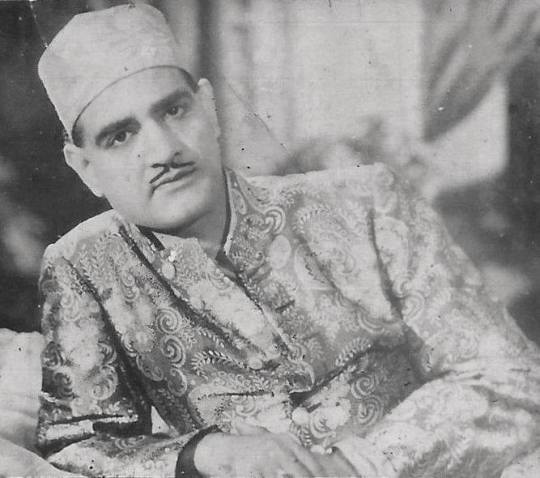
Tribute to K. L. Saigal on his 70th death anniversary.
Kundan Lal Saigal, often abbreviated as K. L. Saigal (11 April 1904 – 18 January 1947), was a singer and actor who is considered the first superstar of the Hindi film industry, which was centred in Kolkata during Saigal's time, but is currently centred in Mumbai.
In the early 1930s, classical musician and music director Harishchandra Bali brought K.L. Saigal to Calcutta and introduced him to R. C. Boral. R.C. Boral took an instant liking to his talents. Saigal was hired by B. N. Sircar's Calcutta-based film studio New Theatres on a contract of Rs. 200 per month. There he came into contact with contemporaries like Pankaj Mullick, K. C. Dey and Pahari Sanyal.
Meanwhile, Indian Gramophone Company had released Saigal's record containing a couple of Punjabi songs composed by Harishchandra Bali. In this way, Bali became Saigal's first music director. The first film in which Saigal had a role was the film Mohabbat Ke Ansu, followed by Subah Ka Sitara and Zinda Lash, all released in 1932. However, these films did not do very well. Saigal used the name Saigal Kashmiri for his first three films and used his own name Kundan Lal Saigal (K. L. Saigal) from Yahudi Ki Ladki (1933). In 1933, four bhajans sung by Saigal for the film Puran Bhagat created a sensation throughout India. Other films that followed were Yahudi Ki Ladki, Chandidas, Rooplekha and Karwan-E-Hayat. As a youngster, Lata Mangeshkar is alleged to have said that she wanted to marry K.L. Saigal after seeing his performance in Chandidas (1934). In 1935, Saigal played the role that would come to define his acting career: that of the drunken title character in Devdas, based on Sarat Chandra Chattopadhyay's novel of the same name and directed by P.C. Barua. His songs in the film Devdas (1935), Balam Aaye Baso Moray Man Mein and Dukh Ke Ab Din Beetat Naahi, became popular throughout the country.
Saigal picked up Bengali very well and acted in seven Bengali films, produced by New Theatres. Rabindranath Tagore first heard Saigal before giving consent for the first time to a non-Bengali singing his songs. Saigal endeared himself to the whole of Bengal through his 30 Bengali songs.
Saigal's association with New Theatres continued to bear fruit in the successful films Didi (Bengali), President (Hindi) in 1937, Desher Mati (Bengali), Dharti Mata (Hindi) in 1938, Saathi (Bengali), Street Singer (Hindi) in 1938, Dushman (1939), Jiban Maran (1939) and Zindagi in 1940, with Saigal in the lead. There are a number of songs of this era which form the rich heritage of film music in India. Also, in Street Singer, Saigal rendered the song Babul Mora Naihar Chhooto Jaye live in front of the camera, even though playback was becoming the preferred method of singing songs in films.
In December 1941, Saigal moved to Mumbai to work with Ranjit Movietone. Here he acted and sang in a number of successful films. Bhukt Surdas (1942) and Tansen (1943) were hits during this period. The latter film is still remembered for Saigal's performance of the song Diya Jalao in Raga Deepak; in the same movie, he also sang "Sapta Suran,Tin .. Gaa-o Saba Guni Jan". In 1944, he returned to New Theatres to complete My Sister. This film contained the songs Do Naina Matware and Ae Qatib-e-Taqdeer Mujhe Itna Bata De.
By this time, alcohol had become a predominant factor in Saigal's life. His dependence on alcohol had begun affecting his work and his health. It was said that he could only record a song after being fortified with liquor. He survived ten years of drinking; however, his alcoholism was too advanced for even a single attempt at abstinence, and Saigal died in his ancestral city of Jalandhar on 18 January 1947, at the age of 42. However, before his death, he was able to churn out three more hits under the baton of Naushad Ali for the film Shahjehan (1946). These are Mere Sapnon Ki Rani, Ae Dil-e-Beqaraar Jhoom and Jab Dil Hi Toot Gaya. Parwana (1947) was his last film, released after his death, in which he sang under the baton of Khawaja Khurshid Anwar. The four songs which Saigal sang in Parwana are: Toot gaye sab sapne mere, Mohabbat mein kabhi aisi bhi haalat, Jeene ka dhang sikhaae ja, and Kahin ulajh na jaana. Saigal was survived by his wife Asha Rani (whom he married in 1935); three children, a son and two daughters: Madan Mohan, Nina (born 1937) and Bina (born 1941); and an adopted child, his late elder brother's daughter, Durgesh Nandani, whom he adopted when he was still single.
In a career of fifteen years, Saigal acted in 36 feature films – 28 in Hindi, seven in Bengali, and one in Tamil. In addition, he acted in a short comedy Hindi film, Dulari Bibi (three reels), released in 1933. In 1955, B.N. Sircar released a documentary film based on the life of K.L. Saigal, Amar Saigal. In the film, G. Mungheri performed the title role of Saigal. The film contained 19 songs lifted from Saigal's films. In all, Saigal rendered 185 songs which includes 142 film songs and 43 non-film songs. Of the film songs, there are 110 in Hindi, 30 in Bengali and two in Tamil. There are 37 non-film songs in Hindi, and two each in Bengali, Pashto, Punjabi and Persian. His non-film songs comprise bhajans, ghazals and hori. He has rendered the creations of poets such as Ghalib, Zauq, and Seemab.
Saigal's distinctive singing was revered and idolised by the first generation of post-independence Hindi Film playback singers, including Lata Mangeshkar, Kishore Kumar, Mohammad Rafi, and Mukesh. Lata Mangeshkar and Kishore Kumar have even gone on record in an interview that they consider Kundan Lal Saigal to be their musical guru. K L Saigal became famous because of the 'new' technology of 78 rps lac records and players. Mukesh started his career as a copycat of K L Saigal but went on to develop his distinctive style. These records were recorded in one take with all instruments playing along.
2 notes
·
View notes
Text
Frank Sinatra – I’ve Got The World On A String
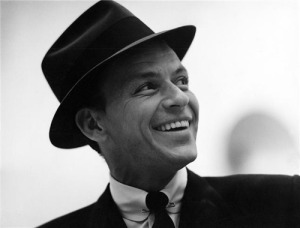
Frank Sinatra – I’ve Got The World On A String
Call 1-855-637-4055 for our Psychic line as low as 66¢/min
lyrics:
I’ve got the world on a string
I’m sitting on a rainbow
Got the string around my finger
What a world, what a life – I’m in love
I’ve got a song that I sing
I can make the rain go
Any time I move my finger
Lucky me, can’t you see – I’m in love
Life is a beautiful thing
As long as I hold the string
I’d be a silly so-and-so
If I should ever let it go
I’ve got the world on a string
I’m sitting on a rainbow
Got the string around my finger
What a world, what a life – I’m in love
Life is a beautiful thing
As long as I hold the string
I’d be a silly so-and-so
If I should ever let it go
I’ve got the world on a string
I’m sitting on a rainbow
Got the string around my finger
What a world,
Man, this is the life
Hey now, I’m so in love
About Frank Sinatra:
Francis Albert “Frank” Sinatra (December 12, 1915 – May 14, 1998) was an American singer and film actor. Beginning his musical career in the swing era as a boy singer with Harry James and Tommy Dorsey, Sinatra found unprecedented success as a solo artist from the early to mid-1940s after being signed by Columbia Records in 1943.
Back on the small-screen, Sinatra once again worked with Jobim and Ella Fitzgerald on the TV special, A Man and His Music + Ella + Jobim. The chorus of Bon Jovi‘s “It’s My Life” (subsequently covered by Paul Anka on Rock Swings) references the song in the line “My heart is like an open highway/Like Frankie said, I did it my way.”
Other Songs By Frank Sinatra:
“I Won’t Dance” is a song composed by Jerome Kern, with lyrics written by Oscar Hammerstein II and Otto Harbach, for the 1934 London musical Three Sisters. However, Three Sisters flopped and was quickly forgotten, so when the time came to film the Kern-Harbach musical Roberta, the song was interpolated into the film. It became such a hit that it is now included in all stage revivals and recordings of Roberta. In 1957, Frank Sinatra sung “I Won’t Dance” in his album: A Swingin’ Affair! (and Sinatra-Basie, 1962).
“I’ve Got The World on a String” is a 1932 popular song composed by Harold Arlen, with lyrics written by Ted Koehler. It was written for the 1932 Cotton Club Parade. It was introduced by Cab Calloway and Bing Crosby. It was also recorded by Frank Sinatra in 1953. It reached #14 on Billboard’s most played list. Anthony Perkins sang it in the drama Winter Dream, a production of the live anthology TV series, Front Row Center. Céline Dion also performed this song in her Las Vegas show A New Day…, which ran from 2003 until 2007.
“Summer Wind” is a 1965 song, with music by Heinz Meier and lyrics by Johnny Mercer. The song is a nostalgic tale of a fleeting romance, first recorded by Wayne Newton who had the first national chart hit with the song in 1965, peaking at number 78.b “Summer Wind” is best known for a 1966 recording by Frank Sinatra which peaked at number twenty-five on the Billboard pop singles chart and number one on the Easy Listening chart. The Sinatra version originally appeared on his album, Strangers in the Night.
“That’s Life” is a popular song written by Dean Kay and Kelly Gordon and first recorded by Marion Montgomery. The most famous version is by Frank Sinatra, released on his 1966 album of the same name. Both the album and the song proved major successes for Sinatra. The song was a number-four hit on the Billboard Hot 100 chart and reached number one on the Easy Listening chart for three weeks in December 1966/January 1967.
“Fly Me to the Moon” is a popular standard song written by Bart Howard in 1954. Originally titled “In Other Words” the song was introduced by Felicia Sanders in cabarets before being recorded for the first time by Kaye Ballard. The song soon became known popularly as “Fly Me to the Moon” from the first line of the B verse. Peggy Lee is said to have convinced Bart Howard in 1963 to change the song’s title officially to Fly Me to the Moon. Frank Sinatra recorded a version on the album It Might as Well Be Swing (1964), accompanied by Count Basie. This version was arranged by Quincy Jones who changed the time signature from 3/4 waltz-time to 4/4 and gave it a looser, swing feel. Frank Sinatra also performed the song with Basie on Sinatra at the Sands (1966), and with bossa nova great Antonio Carlos Jobim on Duets II (1994).
Click here to return to positive music list
Read the full article
0 notes
Text
Annette Hanshaw & Ben Selvin and the Crooners Orchestra – Happy Days are Here Again

Annette Hanshaw & Ben Selvin and the Crooners Orchestra – Happy Days are Here Again
Call our Psychic Hotline at 855-637-4055 66¢/min
lyrics:
Happy days are here again
The skies above are clear again
Let us sing a song of cheer again
Happy days are here again
Altogether shout it now
There’s no one
Who can doubt it now
So let us tell the world about it now
Happy days are here again
Your cares and troubles are gone
There’ll be no more from now on,
Happy days are here again
The skies above are clear again
So, let us sing a song of happy cheer again,
Happy, happy, happy days
Are here again!
About Happy Days Are Here Again:
“Happy Days Are Here Again” is a song copyrighted in 1929 by Milton Ager (music) and Jack Yellen (lyrics). The song was recorded by Leo Reisman and His Orchestra, with Lou Levin, vocal (November 1929), and was used in the 1930 film Chasing Rainbows. Today, the song is probably best remembered as the campaign song for Franklin Delano Roosevelt’s (FDR) successful 1932 Presidential campaign. Since FDR’s use of the song, it has come to be recognized as the unofficial theme of the Democratic Party. The lyrics suggest optimism and buoyancy.
Matthew Greenwald characterized it, “A true saloon standard, Happy Days Are Here Again is a Tin Pan Alley standard, and had been sung by virtually every interpreter since the 1940s. In a way, it’s the pop version of Auld Lang Syne.” The song is #47 on the Recording Industry Association of America’s list of “Songs of the Century”.
One of the most influential recordings of the song was made 33 years after its first recording; this was Barbra Streisand’s version in her 1963 album debut The Barbra Streisand Album. She also sang this song on The Judy Garland Show, in a medley with Judy Garland’s Get Happy. While the song is traditionally sung at a brisk pace, her recording is notable for how slowly and expressively she sang it. By 2006, 76 commercially released albums included versions of the song.
About Annette Hanshaw:
Annette Hanshaw (Oct.18,1901 – March 13,1985) was one of the first great female jazz singers. In the late 1920s she ranked alongside Ethel Waters, Bessie Smith and the Boswell Sisters. Her singing style was relaxed and suited the new jazz-influenced pop music of the late 1920s. Although she had a low opinion of her own singing, she continues to have fans because of how she combined the voice of an ingenue with the spirit of a flapper.
Hanshaw made her one and only appearance on film in the 1933 Paramount short Captain Henry’s Radio Show, “a picturization” of the popular Thursday evening radio program Maxwell House Show Boat, in which she starred from 1932 to 1934. Annette Hanshaw was a popular singer and radio star of the 1920s and early Thirties who had many Jazz overtones in her singing style. She stepped out of her role of a torch singer and improvised and had a great deal of swing that harkened to the Big Band singers of the 1930s. She was viewed by the public as the epitome of a flapper.
She was known as “The Personality Girl,” and her trademark was girlishly saying “That’s all” at the end of a lot of her records. Annette Hanshaw recorded under a number of pseudonyms which included Ethel Bingham, Dot Dare, Gay Ellis, Marion Lee, Janet Shaw, Lelia Sandford and Patsy Young. Annette Hanshaw never thought much of her abilities as a singer and retired from showbiz in 1935. Having grown tired of show business, in the late 1930s Annette Hanshaw retired and settled into married life with her husband, Pathé Records executive Herman “Wally” Rose. Later in life, in a would-be comeback, she recorded two demo records, but they were never released.
Between September 1926 and February 1934, she recorded prolifically. From 1926-1928 she recorded for Pathe (her sides were released on both the Pathe and Perfect labels). Starting in June 1928, she recorded for Columbia; most of these were issued on their dime store labels Harmony, Diva, Clarion and Velvet Tone. A handful were also released on their regular price Columbia and OKeh. Although most were released under her own name, she was renamed Gay Ellis (for sentimental numbers) and Dot Dare or Patsy Young (for her Helen Kane impersonations). Starting in August 1932, she began recording for the ARC with her recordings issued on their Melotone, Perfect, Conqueror, Oriole and Romeo. Her final session, February 3, 1934 was placed on ARC’s Vocalion label.
About Ben Selvin:
Ben Selvin (March 5,1898 – July 15,1980), son of Russian-immigrant Jewish parents, was a musician, bandleader, record producer and innovator in recorded music. He was known as The Dean of Recorded Music. Selvin started his professional life at age 15 as a fiddle player in New York City night clubs. A “husky” lad, he looked older than he was and as such was permitted into such establishments. A mere six years later, as leader of his own dance band, the “Novelty Orchestra,” Ben Selvin released the biggest-selling popular song in the first quarter-century of recorded music. That single, Dardanella, eventually went on to sell more than 5 million copies and an additional 2 million pieces of sheet music.
Originally a violinist, Ben Selvin probably made more records than any other bandleader of the 78 rpm era, his career in the record industry spanning decades. He may be best known among record collectors not for specific recordings but for quantity. Articles on page 145 of the January 1924 issue of Talking Machine World and page 86 of the January 1924 issue of Metronome celebrated Ben Selvin‘s 1,000th record–this was early in Ben Selvin‘s career. The articles, evidently based on the same press release prepared by Selvin himself, state that the musician was “twenty-five years of age.” Page 67 of the February 1925 issue of Metronome states that Selvin “recently made his 1200th phonograph record.” He remained important in the record industry for decades, even becoming a vice president of Columbia during the heyday of Frank Sinatra, Dinah Shore, Doris Day and Buddy Clark. Later he was an A & R man for RCA, overseeing the popular RCA Camden series of reissued material until forced to retire at age 65. When nineteen years old, Ben Selvin organized his own orchestra (Ben Selvin and His Orchestra) and played at the Moulin Rouge for Broadway’s record orchestral run–a run of seven years.
During the Columbia era, he recorded under many different names including “The Broadway Nightlites”, “The Knickerbockers”, “The Columbians”, “The Cavaliers”, “Barney Trimble and his Oklahomans”, “Perley Stevens and his Orchestra”, “Jerry Mason and his Californians”, “The Harmonians”, “Rudy Marlow and his Orchestra”, “Columbia Photo Players”, “Frank Auburn and his Orchestra”, “Kolster Dance Orchestra”, “Lloyd Keating and his Music”, “Earl Marlow and his Orchestra”, “Ed Loyd and his Orchestra”, “Ray Seeley and his Orchestra”, “Sam Nash and his Orchestra”, “Mickie Alpert and his Orchestra”, “Johnny Walker and his Orchestra”, “Chester Leighton and his Sophomores”, “Wally Edwards and his Orchestra”, “Roy Carroll and his Sands Point Orchestra”, “Buddy Campbell and his Orchestra”, “Golden Terrace Orchestra”, “Bar Harbor Society Orchestra”, “Ted Raph and his Orchestra”, “Georgia Moonlight Serenaders”, “Cloverdale Country Club Orchestra”, and “Ed Parker and his Orchestra”
According to The Guinness Book of World Records, Ben Selvin recorded more musical sides (on 78-rpm discs) than any other person. One reason for this prolific output is that he recorded for dozens of different labels during this high-growth time in the industry, using a different name (or slightly different name) for each label. Selvin’s output has been estimated at 13,000 to 20,000 song titles.
Click here to return to positive music list
Read the full article
0 notes
Photo
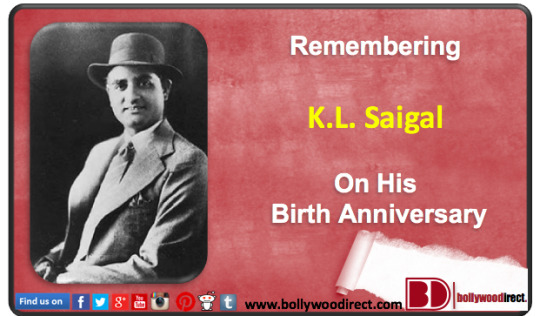
Remembering K.L. Saigal on his 113th birth anniversary.
Kundan Lal Saigal often abbreviated as K. L. Saigal (11 April 1904 – 18 January 1947) was a singer and actor who is considered the first superstar of the Hindi film industry, which was centred in Kolkata during Saigal's time, but is currently centred in Mumbai.
In the early 1930s, classical musician and music director Harishchandra Bali brought K.L. Saigal to Calcutta and introduced him to R. C. Boral. R.C. Boral took an instant liking to his talents. Saigal was hired by B. N. Sircar's Calcutta-based film studio New Theatres on a contract of Rs. 200 per month. There he came into contact with contemporaries like Pankaj Mullick, K. C. Dey and Pahari Sanyal.
Meanwhile, Indian Gramophone Company had released Saigal's record containing a couple of Punjabi songs composed by Harishchandra Bali. In this way, Bali became Saigal's first music director. The first film in which Saigal had a role was the film Mohabbat Ke Ansu, followed by Subah Ka Sitara and Zinda Lash, all released in 1932. However, these films did not do very well. Saigal used the name Saigal Kashmiri for his first three films and used his own name Kundan Lal Saigal (K. L. Saigal) from Yahudi Ki Ladki (1933). In 1933, four bhajans sung by Saigal for the film Puran Bhagat created a sensation throughout India. Other films that followed were Yahudi Ki Ladki, Chandidas, Rooplekha and Karwan-E-Hayat. As a youngster, Lata Mangeshkar is alleged to have said that she wanted to marry K.L. Saigal after seeing his performance in Chandidas (1934). In 1935, Saigal played the role that would come to define his acting career: that of the drunken title character in Devdas, based on Sarat Chandra Chattopadhyay's novel of the same name and directed by P.C. Barua. His songs in the film Devdas (1935), Balam Aaye Baso Moray Man Mein and Dukh Ke Ab Din Beetat Naahi, became popular throughout the country.
Saigal picked up Bengali very well and acted in seven Bengali films, produced by New Theatres. Rabindranath Tagore first heard Saigal before giving consent for the first time to a non-Bengali singing his songs. Saigal endeared himself to the whole of Bengal through his 30 Bengali songs.
Saigal's association with New Theatres continued to bear fruit in the successful films Didi (Bengali), President (Hindi) in 1937, Desher Mati (Bengali), Dharti Mata (Hindi) in 1938, Saathi (Bengali), Street Singer (Hindi) in 1938, Dushman (1939), Jiban Maran (1939) and Zindagi in 1940, with Saigal in the lead. There are a number of songs of this era which form the rich heritage of film music in India. Also, in Street Singer, Saigal rendered the song Babul Mora Naihar Chhooto Jaye live in front of the camera, even though playback was becoming the preferred method of singing songs in films.
In December 1941, Saigal moved to Mumbai to work with Ranjit Movietone. Here he acted and sang in a number of successful films. Bhukt Surdas (1942) and Tansen (1943) were hits during this period. The latter film is still remembered for Saigal's performance of the song Diya Jalao in Raga Deepak; in the same movie, he also sang "Sapta Suran,Tin .. Gaa-o Saba Guni Jan". In 1944, he returned to New Theatres to complete My Sister. This film contained the songs Do Naina Matware and Ae Qatib-e-Taqdeer Mujhe Itna Bata De.
By this time, alcohol had become a predominant factor in Saigal's life. His dependence on alcohol had begun affecting his work and his health. It was said that he could only record a song after being fortified with liquor. He survived ten years of drinking; however, his alcoholism was too advanced for even a single attempt at abstinence, and Saigal died in his ancestral city of Jalandhar on 18 January 1947, at the age of 42. However, before his death, he was able to churn out three more hits under the baton of Naushad Ali for the film Shahjehan (1946). These are Mere Sapnon Ki Rani, Ae Dil-e-Beqaraar Jhoom and Jab Dil Hi Toot Gaya. Parwana (1947) was his last film, released after his death, in which he sang under the baton of Khawaja Khurshid Anwar. The four songs which Saigal sang in Parwana are: Toot gaye sab sapne mere, Mohabbat mein kabhi aisi bhi haalat, Jeene ka dhang sikhaae ja, and Kahin ulajh na jaana. Saigal was survived by his wife Asha Rani (whom he married in 1935); three children, a son and two daughters: Madan Mohan, Nina (born 1937) and Bina (born 1941); and an adopted child, his late elder brother's daughter, Durgesh Nandani, whom he adopted when he was still single.
In a career of fifteen years, Saigal acted in 36 feature films – 28 in Hindi, seven in Bengali, and one in Tamil. In addition, he acted in a short comedy Hindi film, Dulari Bibi (three reels), released in 1933. In 1955, B.N. Sircar released a documentary film based on the life of K.L. Saigal, Amar Saigal. In the film, G. Mungheri performed the title role of Saigal. The film contained 19 songs lifted from Saigal's films. In all, Saigal rendered 185 songs which includes 142 film songs and 43 non-film songs. Of the film songs, there are 110 in Hindi, 30 in Bengali and two in Tamil. There are 37 non-film songs in Hindi, and two each in Bengali, Pashto, Punjabi and Persian. His non-film songs comprise bhajans, ghazals and hori. He has rendered the creations of poets such as Ghalib, Zauq, and Seemab.
Saigal's distinctive singing was revered and idolised by the first generation of post-independence Hindi Film playback singers, including Lata Mangeshkar, Kishore Kumar, Mohammad Rafi, and Mukesh. Lata Mangeshkar and Kishore Kumar has even gone on record in an interview that they consider Kundan Lal Saigal to be their musical guru. K L Saigal became famous because of the 'new' technology of 78 rps lac records and players. Mukesh started his career as a copycat of K L Saigal but went on to develop his distinctive style. These records were recorded in one take with all instruments playing along. Today this may not be possible.In 1970 one such record was priced at Rs 15. In today's money, it is equivalent to Rs 1500 for two songs.
Follow Bollywoodirect
0 notes